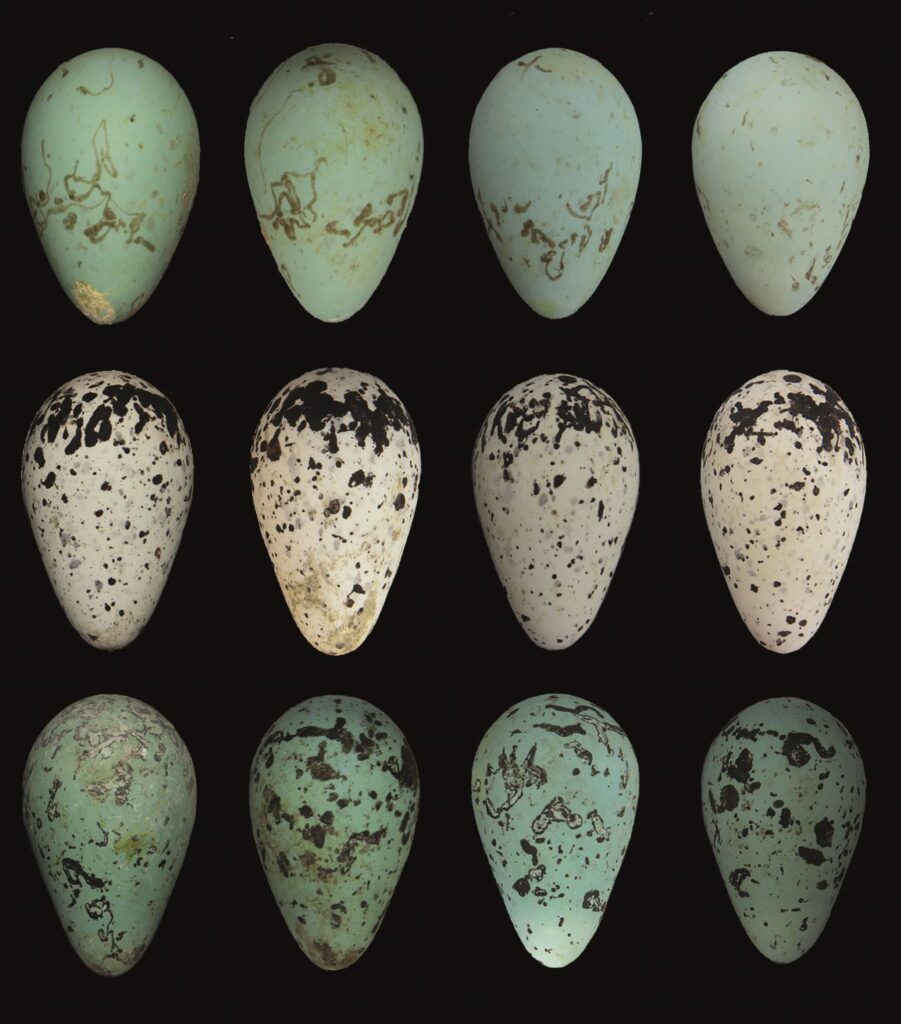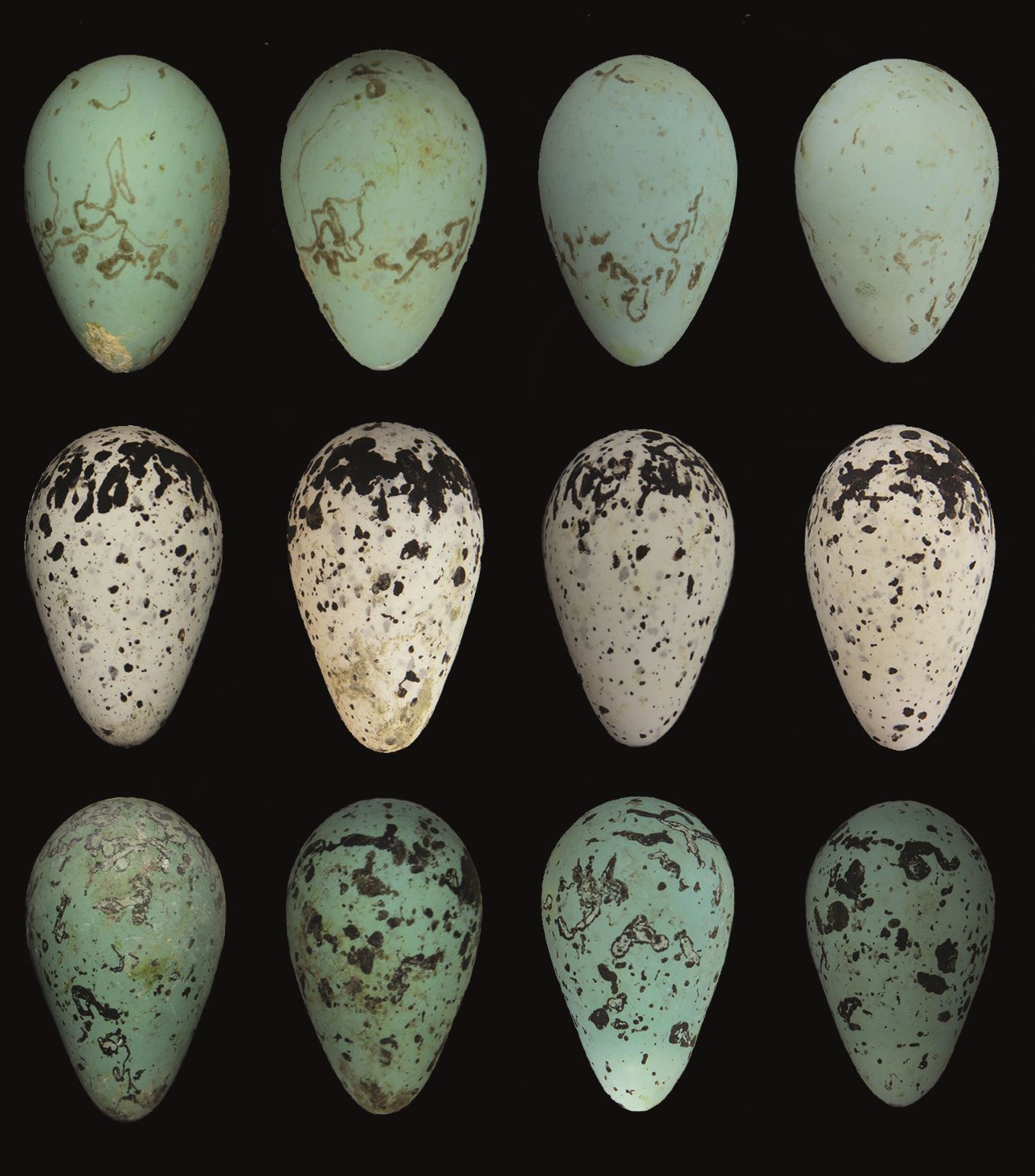The Guillemot lays but one egg — pear-shaped — on bare rocky ledges of a steep cliff. When disturbed by the wind the egg tends to roll in a circle round its pointed end. So wrote Arthur Landsborough Thomson, one of Britain’s top ornithologists, in The Pageant of Nature in 1923.
Many of the bird books from the last two hundred years include an illustration, often as a frontispiece, of one or more guillemot eggs accompanied by an explanation similar to Thomson’s for their shape. I share the enthusiasm of these early authors for the egg of the Common Guillemot Uria aalge (hereafter referred to simply as the Guillemot) – and that of its northern cousin, Brünnich’s Guillemot U. lomvia – but I have long been wary of their explanations for its unusual shape.

